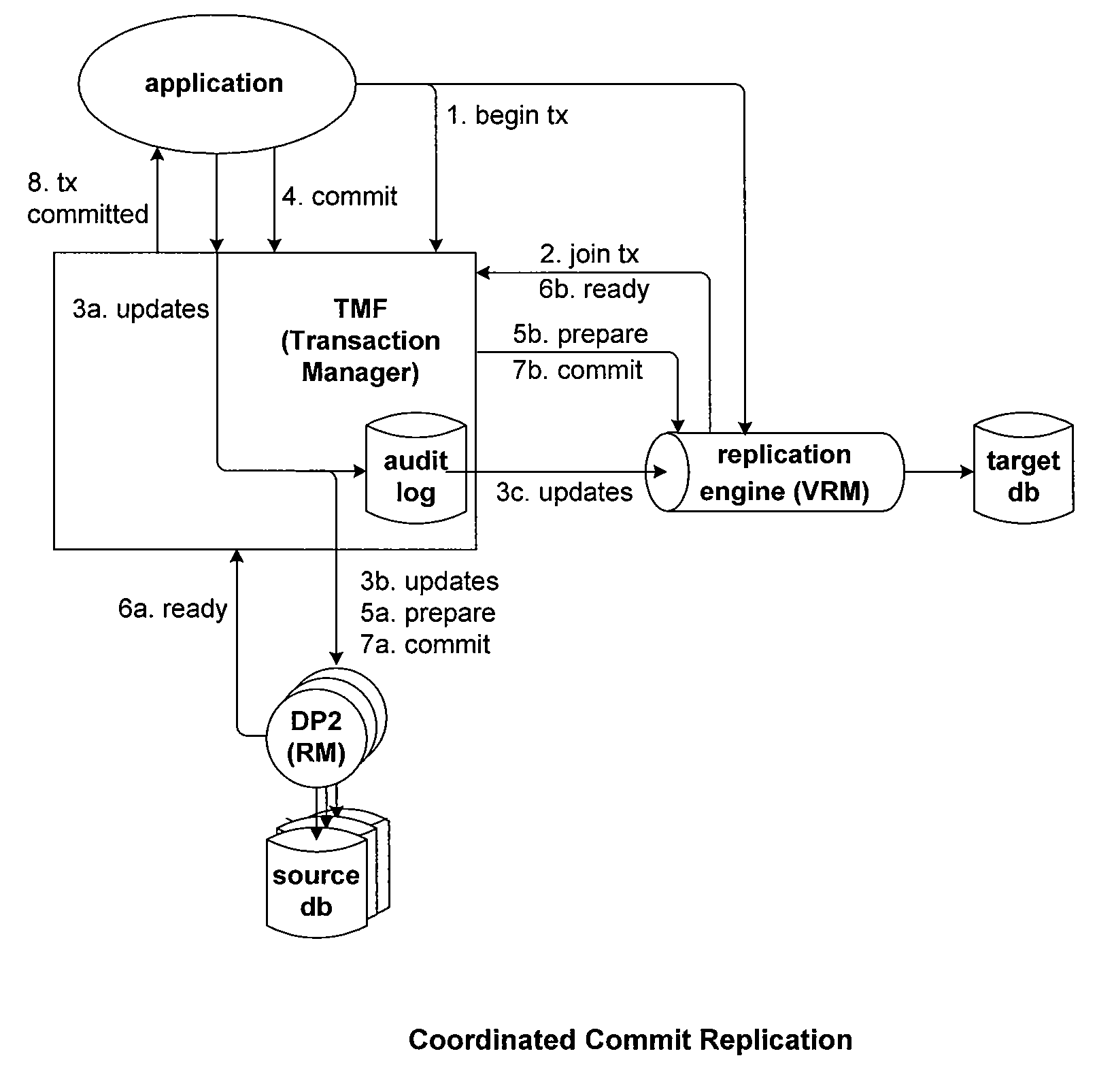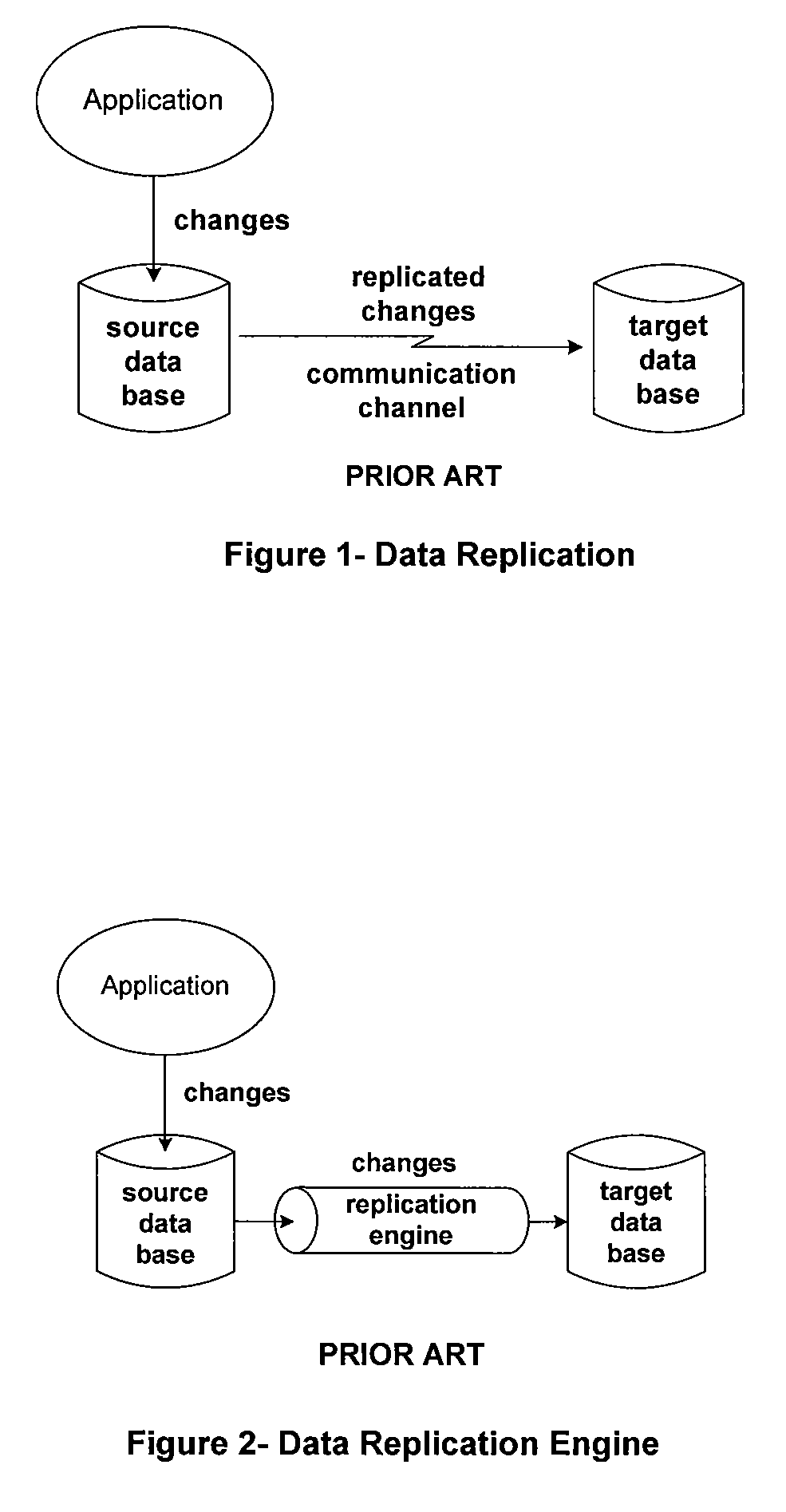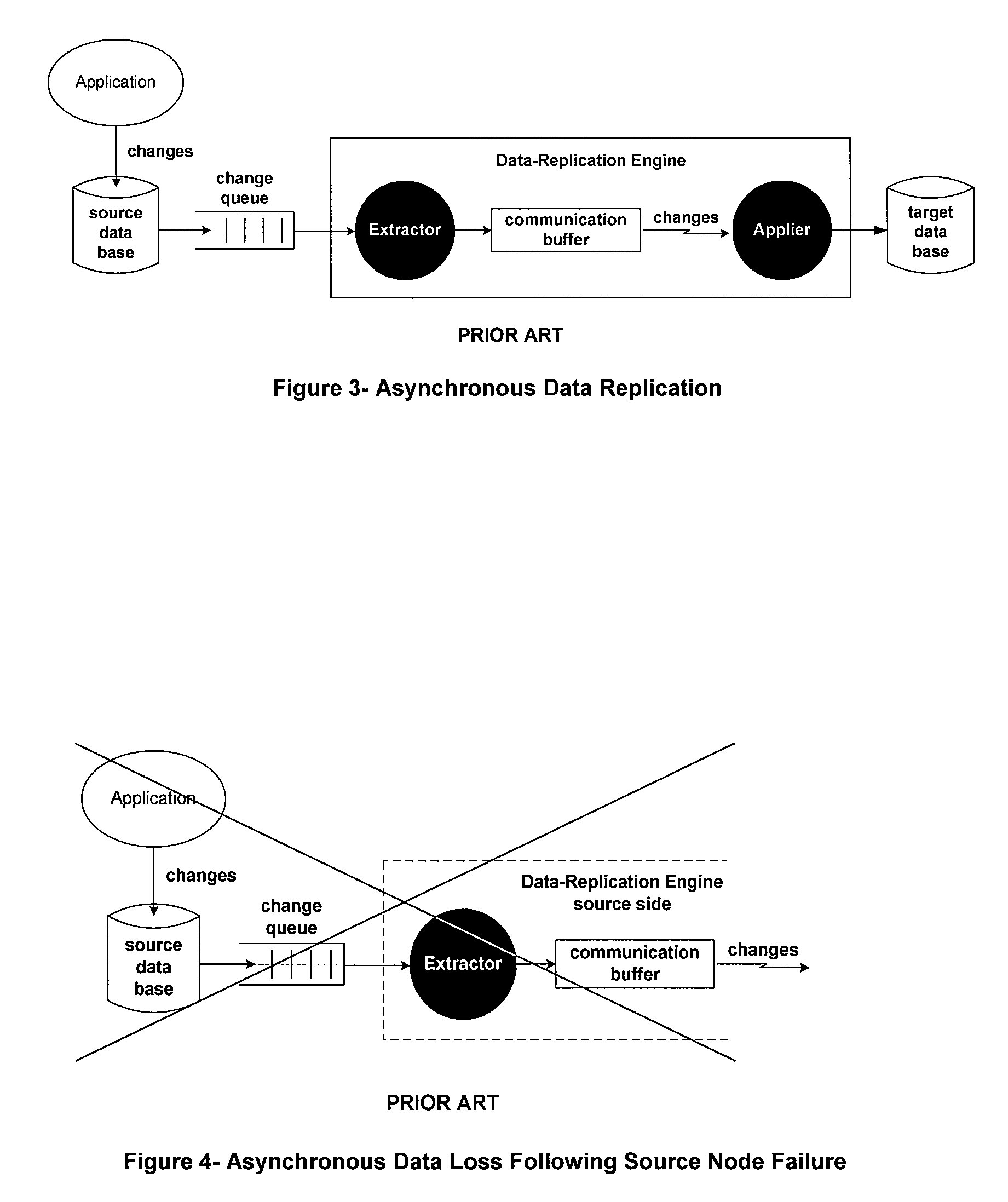Mixed mode synchronous and asynchronous replication system
a replication system and mixed mode technology, applied in the field of mixed mode synchronous and asynchronous replication systems, can solve the problems of loss of data, enterprise failure, and amount of data that might be lost, and achieve the effects of preventing data loss, low latency, and rapid response tim
- Summary
- Abstract
- Description
- Claims
- Application Information
AI Technical Summary
Benefits of technology
Problems solved by technology
Method used
Image
Examples
case 1
[1305]In both cases, the transactions will be sequenced as described below. However, the two cases differ slightly in how they will be handled.[1306] In the first case (application problem), an error is logged at commit time. All of the data in the transaction will have been replicated asynchronously possibly without the collision detection functionality available in the second case (see below).[1307]Case 2: In the second case, the I / Os that are being replicated asynchronously will be flagged by the collector as they are sent to the router and consumers. Those I / Os will include both the before and after image, allowing collisions to be detected and handled using the existing Shadowbase collision detection functionality.
4.8.4 Transaction Sequencing
[1308]In either case, when a transaction with asynchronously replicated data is identified, one needs to ensure that no conflicting data sent after the commit is written until the commit occurs. There are two methods for ensuring that this ...
PUM
 Login to View More
Login to View More Abstract
Description
Claims
Application Information
 Login to View More
Login to View More - R&D
- Intellectual Property
- Life Sciences
- Materials
- Tech Scout
- Unparalleled Data Quality
- Higher Quality Content
- 60% Fewer Hallucinations
Browse by: Latest US Patents, China's latest patents, Technical Efficacy Thesaurus, Application Domain, Technology Topic, Popular Technical Reports.
© 2025 PatSnap. All rights reserved.Legal|Privacy policy|Modern Slavery Act Transparency Statement|Sitemap|About US| Contact US: help@patsnap.com



